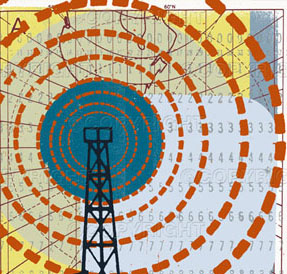Upgrading the Airwaves
Small Photo
Photo

Radio often seems like a lost art. Enthusiasm for mobile technologies and online resources overshadows more traditional, low-tech broadcasting methods. But by no means has radio been left behind. Community radio stations around the world are using new technologies to enhance their broadcasts so listeners can have more control over the programs, engage more fully with the content, and work towards fulfilling community information needs. Listener outreach and participation help radio broadcasting stay relevant, connect listeners to a broader information network, and provide a platform for community discourse.
After radio, mobile phones are one of the most prevalent technologies in the developing world. SMS provides radio stations a direct link with listeners, allowing for feedback and discussion. Frontline SMS has developed a tool to help community stations better facilitate dynamic interactions using text messaging. Kibera-based Pamoja FM is one example of the Frontline SMS tool in action. Pamoja FM promotes a peaceful society and empowers the youth of Nairobi’s slums by providing an outlet for discussion among a disenfranchised group.
Kothmale Radio goes one step further, combining the resources of the Internet with radio programs. A local radio station in central Sri Lanka, Kothmale Radio has gained attention for their unique combination of community radio and internet. The station itself hosts Internet-enabled community computers, providing direct Internet access to the community. The station also incorporates live web-browsing into their broadcasts. For at least an hour each day, radio hosts search online to answer listeners’ questions, helping them find the best answers and understand the information.
Community radio stations have a uniquely trusted position within their communities. By using this trust, these stations can find ways to positively impact society. Strengthening their interactive capabilities with tools like Frontline SMS, computers, and web resources, radio can serve as a platform of dialogue, conduits of education and promoters of communication. The international community has started to realize the power of local radio stations. UNHCR has partnered with Star FM to help provide information to the Dadaab refugee camp. Empowering community radio with digital technologies has huge potential for strengthening communities, opening space for discourse and giving a voice back to the people.
In the past, NDI has used radio to build communication channels in otherwise unconnected communities, linking them not only with each other, but with crucial information. Between 2007 and 2009, nearly 300,000 radios were given out in southern Sudan, where NDI also partnered with a local radio station for citizen education. While Radio 2.0 is still new here at NDI, its an important tool going forward.
